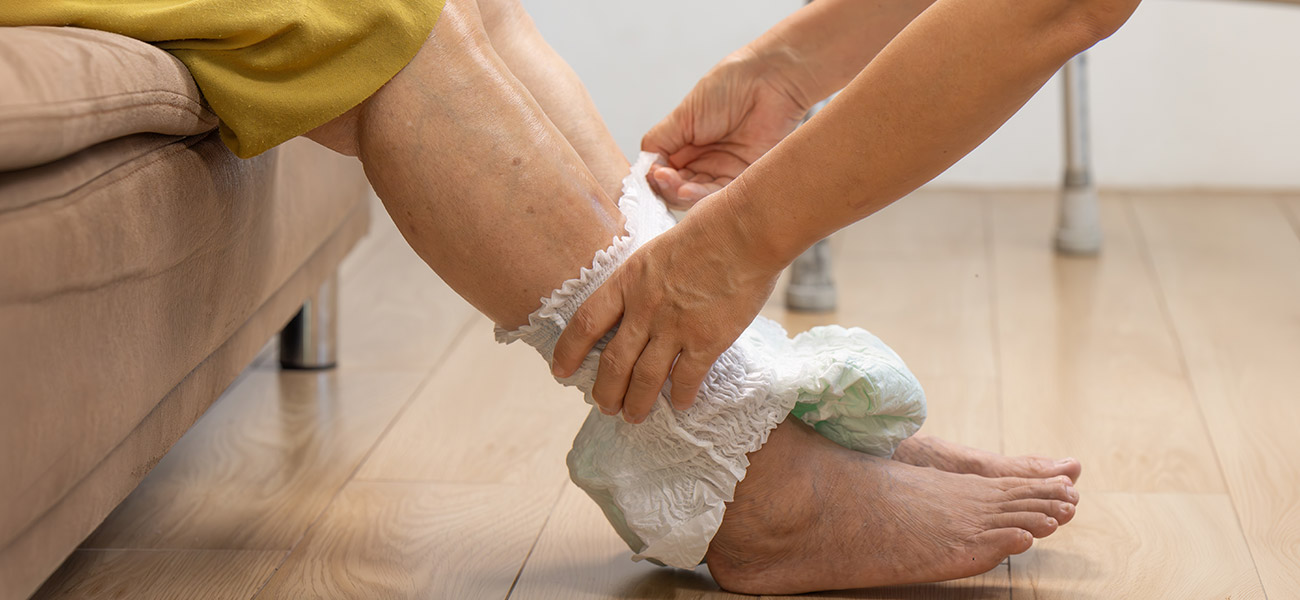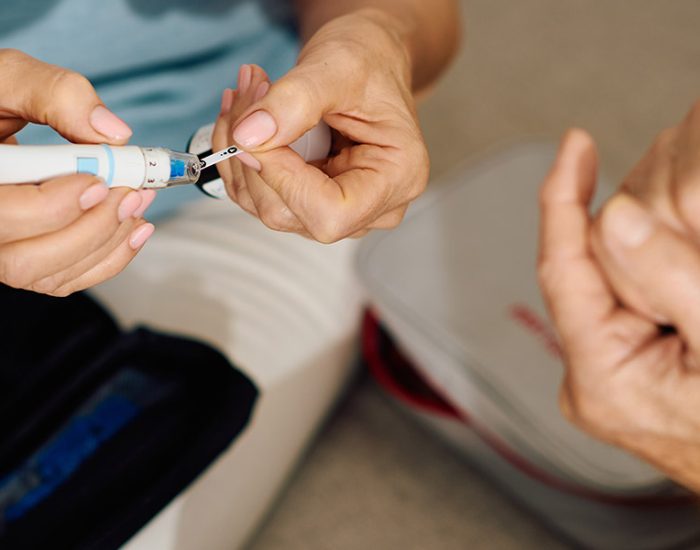How to Prevent Skin Irritation and Rashes While Using Adult Diapers
Using adult diapers is a practical and empowering solution for managing incontinence. However, without proper care and hygiene, they can sometimes lead to skin irritation, rashes, or discomfort—especially for seniors with sensitive skin. The good news is that with the right steps and a high-quality product, you can easily prevent these issues and keep skin healthy, dry, and comfortable.
Here’s everything caregivers and seniors need to know to stay rash-free while using adult diapers.
Why Skin Irritation Happens
Skin irritation from diapers typically occurs when:
- The diaper is not changed frequently enough
- Moisture is trapped against the skin for long periods
- The diaper doesn’t fit properly
- The material causes chafing or allergic reactions
These conditions can lead to redness, itching, rashes, or even diaper dermatitis if left unaddressed. Thankfully, prevention is simple with a few mindful habits.
1. Choose the Right Diaper
Start with a high-quality diaper that is breathable, soft on the skin, and designed for long-lasting absorbency.
Lifree Adult Diapers, for example, are crafted to:
- Provide up to 12 hours of protection
- Absorb up to 6 glasses of liquid
- Minimize leakage and discomfort
- Offer a pant-style fit that prevents chafing and allows better airflow
This helps reduce moisture buildup and skin stress.
2. Maintain a Regular Change Schedule
Changing diapers regularly is key. Even if the diaper is highly absorbent, prolonged exposure to moisture can irritate the skin. For active seniors, check and change every 4–6 hours, or sooner if needed. For overnight use, opt for overnight diapers for adults that are specifically designed to lock in moisture while protecting skin.
3. Clean Gently and Thoroughly
Always clean the diaper area gently with a mild, fragrance-free cleanser or warm water. Avoid harsh soaps, and be sure to pat dry (not rub) to avoid skin damage.
For caregivers, using soft wipes and following a gentle technique can make a big difference in preventing rashes.
4. Use a Barrier Cream
Applying a barrier cream or moisturizer after cleaning can help protect the skin from moisture and friction. Look for products that are specifically made for sensitive or elderly skin.
5. Keep Skin Dry and Well-Ventilated
Allow time for the skin to breathe between changes when possible. Ensure that the diaper is snug but not too tight, as tight-fitting diapers can restrict airflow and cause heat buildup.
Final Thoughts
Comfort and dignity go hand in hand—and preventing skin irritation is a crucial part of that. By choosing the best adult diapers, maintaining good hygiene, and being proactive with skincare, seniors can wear diapers comfortably and confidently.
Whether you’re a caregiver or a senior managing incontinence yourself, remember: the goal isn’t just protection, it’s well-being. And with products like Lifree, that’s entirely within reach.
FAQ’s
2. How often should adult diapers be changed to prevent rashes?
To avoid rashes, adult diapers should be changed every 4–6 hours, or sooner if the diaper becomes wet. Wearing a soiled diaper for too long allows moisture to build up, which can cause irritation or breakouts on the skin. Overnight diapers may last longer, but even those should be changed first thing in the morning. For those with sensitive skin, more frequent changes are better. If the diaper feels warm or full, it’s a sign to replace it. A fresh diaper not only helps with hygiene but also keeps the skin dry and protected. Setting reminders or keeping a regular schedule for changes can help avoid missed times. Clean the skin gently during every change, and let it air-dry before putting on a new one. This simple habit can greatly reduce the risk of skin rashes or discomfort.
3. What type of adult diaper is best for sensitive skin?
For sensitive skin, it's best to choose adult diapers that are soft, breathable, and have a dry feel layer. Look for diapers with a cottony surface and ones that allow air to pass through, which helps prevent sweat buildup. Some diapers are specially designed for people with delicate skin and contain lotion or mild skin protection layers. It’s also helpful to use hypoallergenic diapers that don’t have perfumes or harsh chemicals. Pant-style diapers are usually good for active people and provide a snug fit without too much rubbing. Tape-style ones may be easier for those who stay in bed. Whatever type is chosen, always pick the right size so the diaper fits properly and doesn't rub or cause pressure. Trying different brands in small packs first helps find the most comfortable one for your skin needs.
4. Can wearing diapers for too long cause skin problems?
Yes, wearing diapers for too long can lead to skin problems like redness, itching, rashes, and even sores. When a diaper stays wet for hours, it traps moisture next to the skin. This softens the skin and makes it easier to break or react badly. Also, if the diaper is full, it may press against the skin and cause friction or heat buildup. Over time, this can lead to painful irritation or infections. That’s why regular changing is very important. Even if it doesn’t feel too wet, changing every 4–6 hours keeps the skin safe. For night use, high-absorbency diapers can be helpful, but they should be changed early in the morning. Adding soft, loose-fitting clothes over the diaper also helps prevent heat and rubbing. Clean, dry skin is the best way to avoid long-term skin issues.
5. How should you clean the skin while changing adult diapers?
Cleaning the skin the right way is very important during every diaper change. First, gently remove the used diaper and use soft tissues or wet wipes to clean the area. Wipes should be alcohol-free and fragrance-free to avoid irritation. Then, wash the area with lukewarm water and a mild soap or cleanser. Be careful not to scrub too hard. After washing, gently pat the skin dry with a clean towel—never rub. Make sure the area is fully dry before putting on a new diaper. Some people also use a skin cream or protective barrier cream after drying to avoid future irritation. Letting the skin air out for a few minutes before putting on the next diaper also helps. Keeping this cleaning routine for every change helps prevent rashes and keeps the skin healthy and comfortable.
6. Is it okay to use powders or creams with adult diapers?
Yes, but only the right kind. Powders and creams can help protect the skin if used correctly. Baby powder or talcum powder helps keep the skin dry by absorbing moisture, but it should be used sparingly. Too much powder can build up inside the diaper and cause clumping or more irritation. Skin creams or barrier creams are good for people with sensitive skin. They add a thin layer on the skin, protecting it from moisture. Make sure the cream is unscented and meant for use with diapers. Never use strong or medicated creams without checking with a doctor. Also, allow the cream to dry before wearing a new diaper so it doesn’t stick. Overall, these products can help, but clean, dry skin and regular diaper changes are still the most important things for skin health.
7. What clothes are best to wear with adult diapers to avoid irritation?
Comfortable, loose-fitting clothes are best when wearing adult diapers. Tight clothes can press the diaper against the skin, causing heat, friction, and even rashes. Cotton clothes allow air to pass through and help the skin breathe. Avoid clothes made from nylon or polyester that may trap sweat. If you're wearing a pant-style diaper, choose pants or pajamas that are not too tight around the waist or thighs. For tape-style diapers, wide-legged pants or shorts give more room. Nightwear should be soft and not too snug to avoid pressure when sleeping. During hot weather, wearing light cotton clothes helps prevent sweating and discomfort. Choosing the right clothes not only adds to comfort but also keeps the skin healthy. Always change out of wet clothes quickly, as they can also increase the chance of irritation or skin problems.
8. How can you prevent sweat and heat while wearing diapers in summer?
To prevent sweat and heat in summer, pick diapers that are made with breathable material. These let air pass through and help reduce sweat buildup. Also, wear light cotton clothes that allow the skin to stay cool. Stay in cool or air-conditioned rooms when possible. Change diapers more often during the day, even if they are not fully used, to avoid moisture staying on the skin too long. After removing the diaper, let the skin air-dry for a few minutes before wearing a new one. You can also use a small amount of powder to help keep the area dry, but don’t use too much. Drink enough water to stay cool from the inside. Following these steps helps reduce heat around the diaper area and lowers the risk of getting skin rashes or discomfort in warm weather.
9. What signs show that a diaper is causing skin problems?
If a diaper is causing skin problems, you may notice signs like redness, itching, or swelling around the area where the diaper touches. Some people also feel a burning or stinging feeling. In worse cases, the skin may have small bumps or become dry and flaky. If the diaper area feels warm or looks shiny and red, it could mean irritation or a rash is starting. Bad smell or sticky skin can also be warning signs. If any of these signs appear, it’s best to change the diaper more often and keep the skin clean and dry. Switching to a different diaper size or type may also help. Using a skin cream or talking to a doctor is a good idea if the problem does not go away. Noticing these signs early can help stop bigger problems later.
10. Can using the wrong diaper size cause skin irritation?
Yes, using the wrong size diaper can definitely cause skin irritation. If the diaper is too tight, it may rub against the skin and leave red marks. Tight diapers also trap heat and sweat, which can make the skin uncomfortable. If the diaper is too loose, it may leak and cause wetness to stay on the skin longer. Wet skin is more likely to get rashes or feel sore. That’s why it’s important to check the diaper size carefully. Most brands offer size charts based on waist size or weight. Try a sample pack before buying in large amounts. Make sure the diaper fits snugly but not too tightly. A good fit will help keep the skin dry, prevent leaks, and reduce friction. Choosing the right size is one of the simplest ways to avoid irritation and stay comfortable.






















